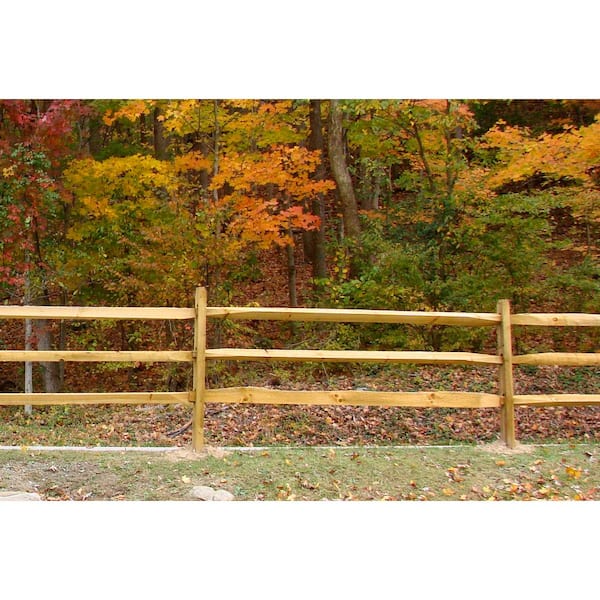

Italianate fences may borrow details from the corbels, cornices, or brackets on the house and should be painted a neutral earth color, not the bright white that Andrew Jackson Downing detested. Historic fences can mirror the architectural motifs of their houses, like the quatrefoils carved into the rail around the Gothic Revival Roseland Cottage in Woodstock, Connecticut, which dates to 1846. In 1870, Frank Scott proclaimed in The Art of Beautifying Suburban Home Grounds that while “fences must harmonize with the architecture and more elegant finish of the street,” they should be virtually transparent: “That kind of fence is best which is least seen, and best seen through.” Writing in 1850, Andrew Jackson Downing suggested that “a slight paling fence, rendered inconspicuous by painting it dark green” was the least offensive option. The Italianate style (1840-1890) was aligned with the picturesque landscape movement that considered fences a necessary evil, so ideally they were as inconspicuous as possible. Finishing with a dark-color paint or stain and ornate ironwork would also be appropriate. For a more elaborate touch, finials might be carved like spires, and the gate could mimic a pointed arch with quatrefoil and trefoil patterns carved into its posts.

Fencing for a Gothic Revival house (1830-1860) can reflect medieval influences with pointed-arch pickets and posts, or with palings and rails carved to resemble open tracery. Like the mid-19th century’s romantic movements in music and literature, houses in romantic styles evoke impressions of the past or an idealized setting.

The fence of a classical house would most likely have been painted to coordinate with the house, often white and ochre. Popular motifs were flames, urns, fruit, and, in the Federal period, eagles. Look to the house for details to incorporate into the fence design and for classical symbols to grace the post tops. The finest of these fences have a top rail covering the pickets and carved finials on the gate posts. ClassicalĬonsidered one of the finest Georgian houses, the 1784 Langdon House in Portsmouth, New Hampshire, boasts a textbook Colonial fence with turned pickets, stepped rails, and posts capped by classical urns.Ĭlassically inspired houses built in the Georgian (1714-1810), Federal (1790-1830) and Greek Revival (1830- 1850) styles call for fences that mirror their balanced proportions and architectural motifs. The pickets can be flat on top and narrow, wide, or both to suit the house and situation. Picket fences can be dressed down by remaining unpainted and built from materials at hand. The medieval paling, a flat strip or round stake of wood brought to North America by European settlers, evolved into the picket fence-the all-purpose choice for residential fencing since the late 18th century. Spit rail fences were largely agricultural, but may have precedents for the oldest houses and even for simple or rural houses up to the late 19th century. The earliest wood fences were generally owner-built of local materials-stockades of logs planted vertically in the earth or, later, logs split and laid horizontally to make the zigzag, split-rail or worm fences of the frontier. The harsh conditions of the colonial and post-revolutionary eras called for sturdy, utilitarian fences of simple design. Old-house fences do not have to be historical re-creations, but they do look best when their scale, design, and materials harmonize with the size, style, and period of the house, as well as suit its practical purpose.īecause traditionally wood has been the most common fencing material, understanding how fences evolved from logs to pickets and then changed with the ebb and flow of architectural styles can help you choose a successful design. Aside a New England house, wide pickets closely spaced provide privacy, while tops cut to make a swoop between posts add visual interest.


 0 kommentar(er)
0 kommentar(er)
